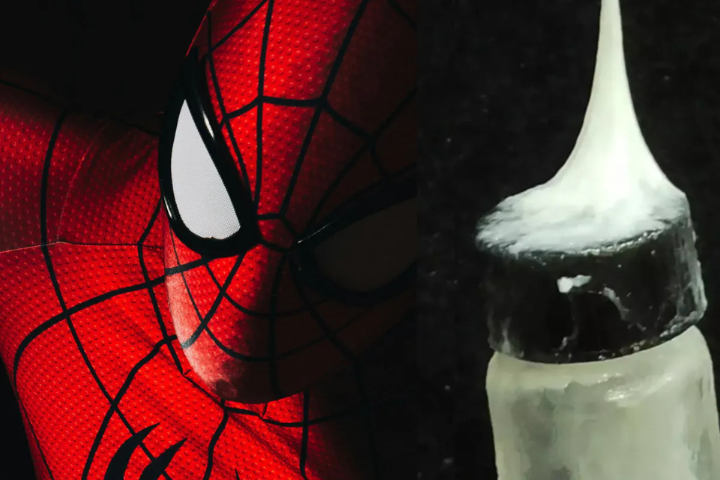Scientists have made a groundbreaking discovery by creating a fluid that transforms into a strong, sticky fibre when shot from a device, capable of lifting heavy objects. Inspired by Spider-Man’s web-slinging abilities, this innovation marks a major step in developing high-tensile fibres. Researchers at Tufts University achieved this “accidental breakthrough” while working with silk proteins. The new material, which forms instantly through a chemical reaction, mimics spider silk’s strength and adhesive properties, offering vast potential for industrial applications. The study was published in Advanced Functional Materials.
Breakthrough in Adhesive Fibre Creation: A Spider-Inspired Innovation
Researchers at Tufts University have made a significant breakthrough in the development of strong, sticky fibres, inspired by the natural silk produced by spiders and other insects. While previous efforts to replicate the strength, elasticity, and adhesiveness of spider silk were challenging, an accidental discovery during an unrelated experiment has opened new doors. Co-author Marco Lo Presti stumbled upon the creation of web-like material while cleaning glassware with acetone, sparking the idea for further research. This “accidental breakthrough,” published in *Advanced Functional Materials*, has led to the development of fibres with remarkable adhesive and tensile properties.
The innovation relies on a process where silk fibroin solutions react with chemicals like acetone or ethanol to form semi-solid gels. By introducing dopamine, scientists accelerated the solidification process, allowing them to create high-tensile, sticky fibres almost instantly. These fibres have potential applications in fields requiring strong tethers, adhesives, or lifting mechanisms, mimicking the superhuman abilities seen in popular culture. The fibres can be finely tuned and controlled, offering new possibilities for the manipulation and transportation of objects using only the fibres’ adhesive properties.
Unique Properties of the Adhesive Fibres: Strong, Tunable, and Versatile
The fibres created by this process demonstrate impressive mechanical properties, with scientists finding that the mixture of silk fibroin, dopamine, and acetone results in a substance capable of attaching to various surfaces. Once the acetone evaporates, the fibres remain sticky and durable, enabling them to adhere to a wide range of materials. A key aspect of the process is the control over the fibre diameter, which ranges from the width of a human hair to half a millimetre, providing flexibility for different applications. The fibres are capable of lifting objects that are more than 80 times their own weight, showcasing their strength.
Moreover, by adding chitosan, a protein found in insect exoskeletons, the tensile strength of the fibres increases up to 200 times. This adjustment also enhances the adhesiveness in specific chemicals like borate buffer by 18 times. The fibres have undergone tests to demonstrate their effectiveness, successfully picking up items such as steel bolts, laboratory tubes, scalpels, and wood blocks from distances of around 12 centimetres. The versatility, strength, and tunability of these fibres present exciting possibilities for industries requiring advanced adhesives or lightweight tethers capable of lifting heavy loads.




GIPHY App Key not set. Please check settings